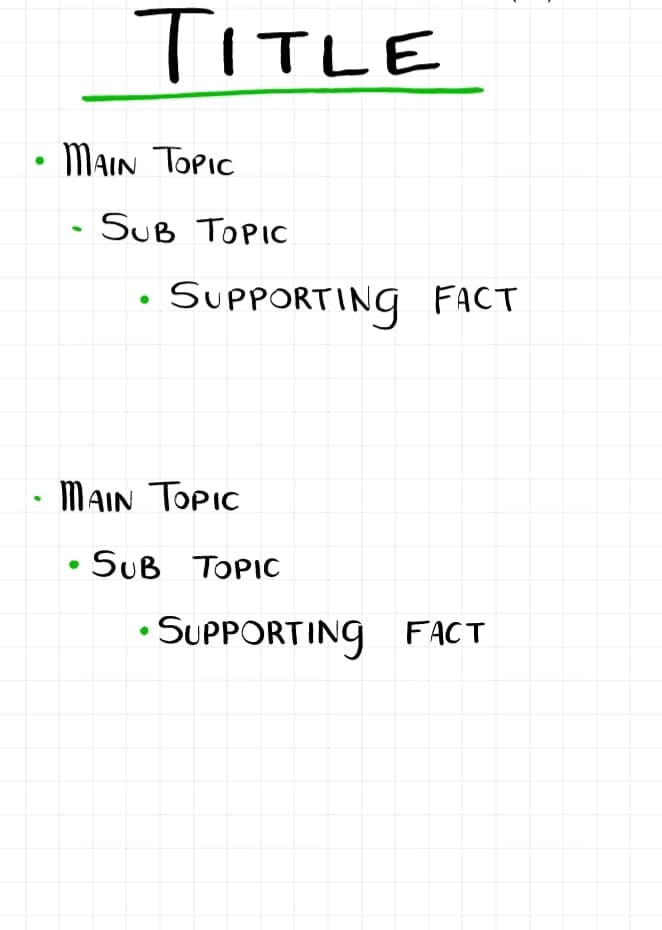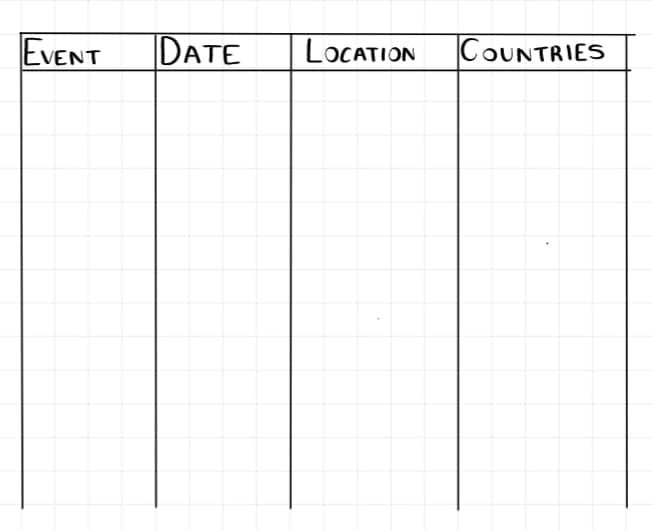There are many different ways to write study notes. So much so, that it can be confusing to know which method may work best for you and the subject you’re currently revising. We have created a handy list of the most popular note taking methods and suggest when you should (or shouldn’t) use each one.
So, let’s get started!
Cornell Method
This method of notetaking is the only one which divides each page into sections. All of the main notes from class would be written in the right-hand column, with any questions or definitions of key words being placed in the left-hand column. The section at the bottom of the page is for summarising the main notes above.
The Cornell Method allows you to extract key details from main ideas in a systematic way. Although it may be difficult to summarise some larger topics on a single page, this method is still very effective. You could use this for science-based subjects, with the definitions and formulae highlighted in the left column and summary section and working through examples in the main body of notes.

Outlining Method
This method is one of the most popular for students. It provides a clear structure to the notes and highlights key points from topics. This would be most appropriate for essay-based topics that require you to prove or disprove a statement. This method would not be suitable for subjects that include a lot of definitions and contains a lot of information as it would be difficult to summarise.

Charting Method
The charting method is ideally used for subjects which contain a lot of information that you need to learn. Although this method is the most time-consuming, it does allow you to compare and contrast several different topics on one piece of paper. This would be most suitable for subjects which focus on a timeline, such as history and politics.

Mapping Method
This method helps organise your notes by dividing them into branches, allowing you to establish relationships between topics. The mapping method is good for brainstorming and is also visually appealing. Although, it is difficult to summarise large amounts of information on to one page using this method. The freeform element of this makes it most suitable for essay-based subjects as you have the ability to add and edit information as you revise.

It is important that you are able to recognise what method of note taking works best for you. The most important aspect to consider is personalisation. Your study notes will be made by you and used to benefit your own learning. So, if you are a visual learner the mapping method might work best for you, or if you struggle summarising key points from your notes the Cornell method may be best.
Remember that your notes are there to work with you and not against you!
